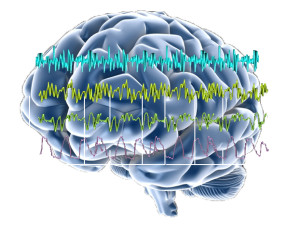 I came across a few articles in the paper recently that illustrated different brain patterns at work. One piece was about a lawyer being sued by the client for filing an appeal on the client’s guilty verdict. In another article a man shot and killed a woman who was banging on his door early in the morning. And a third one referenced composers adding jokes into classical musical scores.
I came across a few articles in the paper recently that illustrated different brain patterns at work. One piece was about a lawyer being sued by the client for filing an appeal on the client’s guilty verdict. In another article a man shot and killed a woman who was banging on his door early in the morning. And a third one referenced composers adding jokes into classical musical scores.
The lawyer filed the appeal believing it was routine good client service. Afterall, who doesn’t want to exhaust all possible avenues to avoid the death penalty? Apparently not that client, who had clearly stated he did not want an appeal; he was guilty as charged and ready to die.
The lawyer’s brain kicked into the normal pattern of behavior; he wrongly assumed that the typical pattern was the right and only path. No deviations from the pattern were ever considered. Now his spotless career is marred; he’s being sued for acting without client authorization.
The second piece illustrates that when a pattern involving heightened emotions begins, it’s extremely hard to not follow it to a sometimes tragic conclusion. The woman pounding on the door was just in a car accident and was distraught seeking help. The homeowner mistook the woman’s agitated state for extreme danger and reacted in perceived self-defense, warranted or not.
And the third article illustrates to how hard it is to go against an ingrained pattern. Classical music is supposed to be serious; there is no room for levity in this form of high art. A joke here is considered cheap, vulgar and simply unacceptable. Haydn, Beethoven, Mozart purposely placed inappropriate musical forms to disappoint audience expectations (the jokes). But the audience didn’t get that it was a joke. Or they understood the intention but refused to laugh. Only serious emotions were permissible for their beloved music. The composers breaking pattern was simply not acceptable.
Patterns are not routines, although they are close cousins. Routines give structure to behavior. Patterns, as described here, relate to thoughts, ideas, and ways of thinking. The brain seeks patterns, as the best way to make sense out of a bombardment of data.
Brain patterns help sort through information, but also limit thinking when they are followed automatically. Recognizing patterns at play is the key to effectively using them to best advantage.
So when you recognize that you are in or about to enter a pattern of behavior, stop for a split second and consider what’s about to happen. Is this a good pattern or a bad pattern? Will following it help you or hurt you?
An example of a ‘bad’ pattern in writing is the word “don’t”, which forces you to take the unwanted action. Writing “Don’t worry about a thing” causes you to worry. This is because the brain thinks in pictures; the word “don’t” is not able to be pictured, so the next picture pops up: you as worried.
An example of a ‘good’ pattern in writing is the word “because”, which assumes a valid reason is coming after it. Writing “I hope you’ll plan to attend the event because we will be unveiling our newest model.” is stronger than, “I hope you’ll plan to attend as we will be unveiling our newest model.” The pattern at work here is: after “because” there follows a good reason. (FYI, the higher the stakes, the better the reason needs to be.)
Next time the topic is: word meaning clarity – how paying attention to nuance is critical to full understanding of meaning. Plus, I’ll review the 4 top words in advertising headlines, looking at each one separately.
Comments? What behavior driven by brain patterns have you observed?
